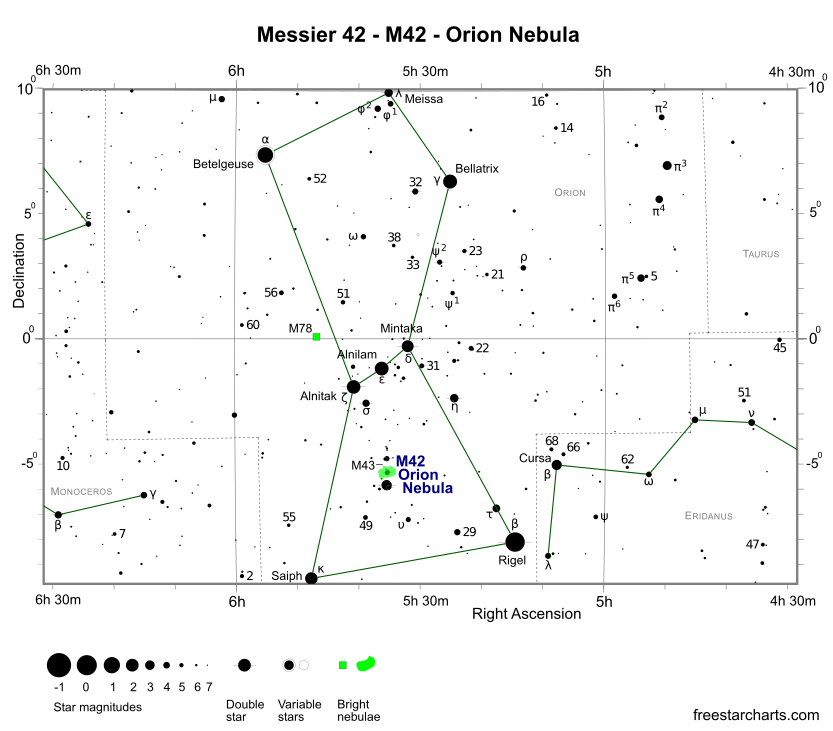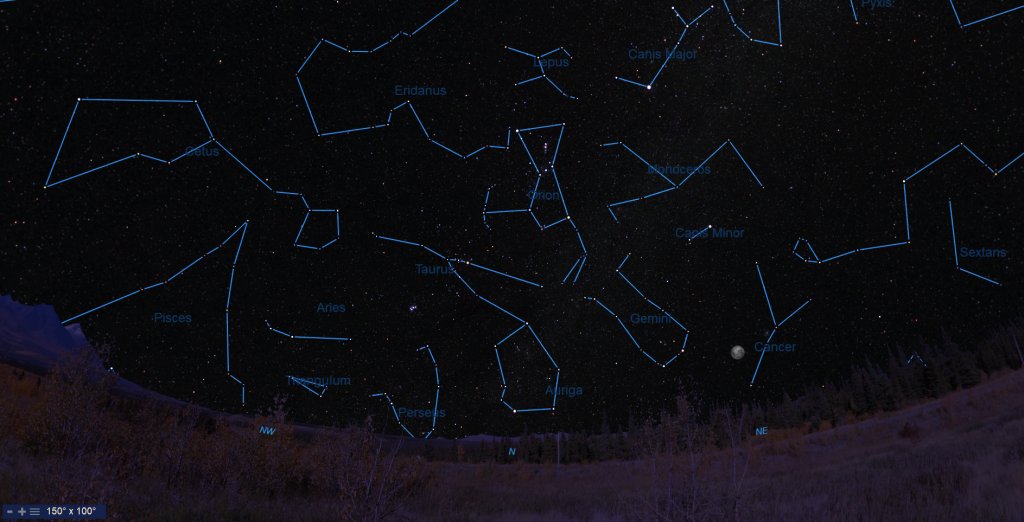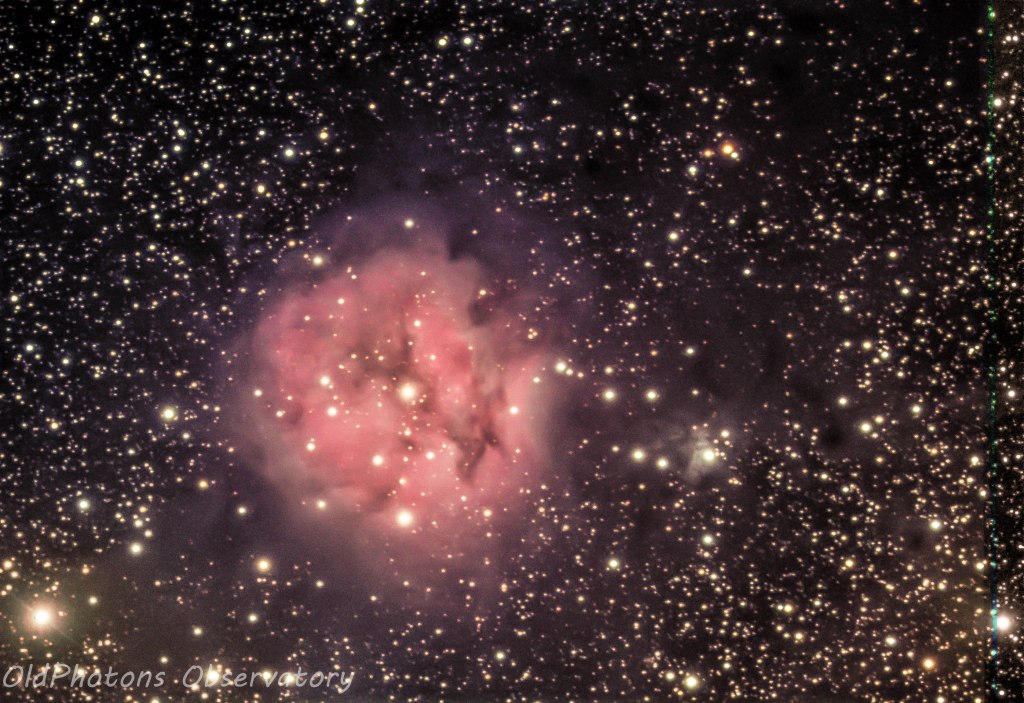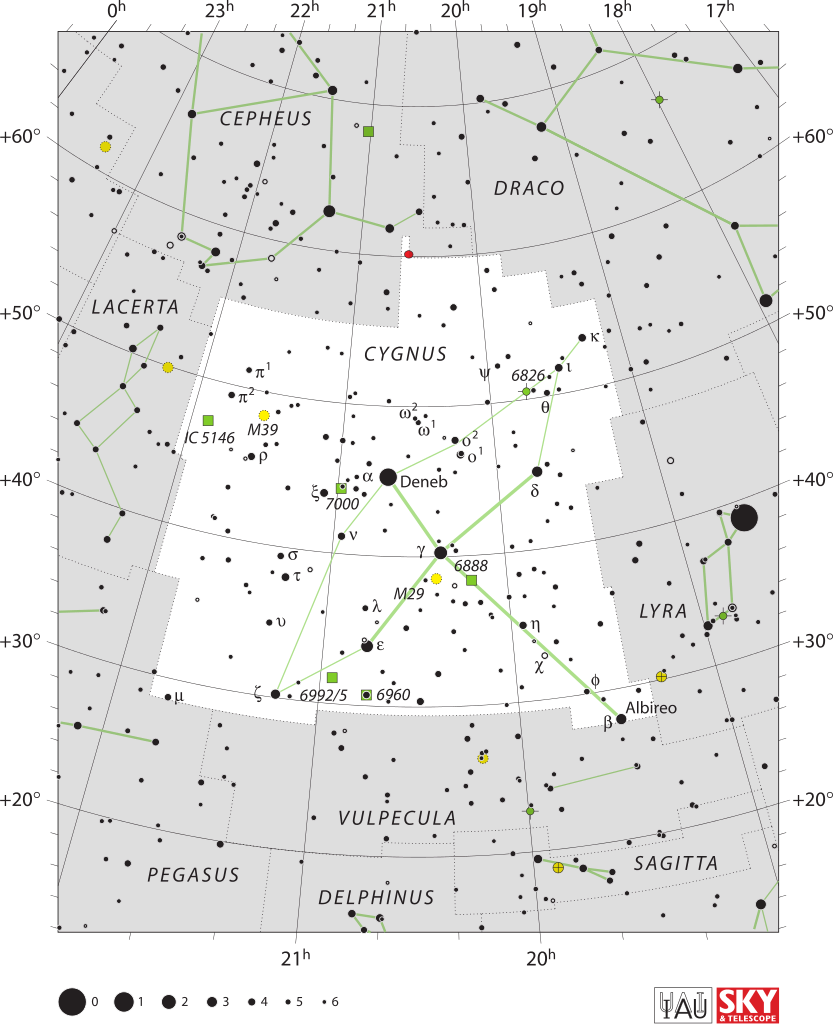
So,… here is M42 the Orion Nebula, that big bright center part to Orion’s sword. This is a true colour image which is the result of only 50 minutes of total exposure, 30 minutes for red, green and blue and 20 minutes luminance.

The image above is taken with a second telescope and in the picture below you can see the two telescopes, one larger than the other.

Yer-good-old-camera probably had a zoom lens and with it you could adjust it to get that up close personal snap or that grand wide picture of that fabulous sunset. In astronomy photography, we have no such luxury. Telescopes are fixed focal length things. In telescopes, a main goal is to keep the optics, lens and mirrors, as simple as possible, adding complexity compromises lost light and distortions.
Which one
Which scope do you think produced which picture? Did the smaller one take the wider (bigger) view?
…
Yes it did. Just like holding a ring up to your eye, the further away it is (i.e. the longer), the less you see thru it. This explains the desire to have both scopes present in the observatory. Below is a representation that shows both ‘fields of view’. The larger telescope cannot see more than the smaller rectangle, and the smaller telescope can see only as much as the larger rectangle.

Why such long exposures?
It used to be the case that taking a picture with yer-good-old-camera was always accompanied with that snap-slap sound of the mirror and shutter and a typical exposure was as little as 1/400th of a second on a bright day, or as long as 1/30th of a second indoor in the evening perhaps.
An old 40W bulb produces about 400 lumens of light [ref], and each lumen is about 1016 photons per second [ref], so your 1/30th of a second exposure collects about 1013 photons. (I have taken a 1 part in 10,000 to account for lens aperture). A typical new camera will have as many as 12 million pixels, each pixel gathers only the light it sees, so we can guess each pixel gathers 1013/(12×106), about one million photons per pixel.
1000000 photons per pixel typical indoor picture
Now, Lets guess how many photons we get in a 1/30th second exposure of the Orion Nebula.
From the nebula the telescope will gather 90 million photons per second and these photons are spread out over almost all the pixels in the camera so, only about (90×106)/(12×106), 7 photons fall on each pixel per second. Finally, if the exposure is 1/30th of a second then we would expect not even 1 photon to be gathered per pixel. The image would be basically black.
Extending the exposure to 5 minutes allows us to gather more photons in each pixel.
2000 photons per pixel if 5 minute exposure
Even with long exposures, in astrophotography we are working with about 1000 times less light than usual photography.
Adrien













